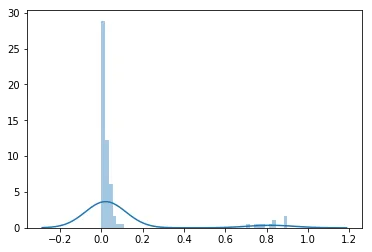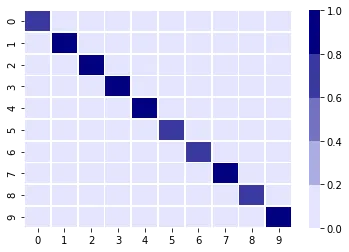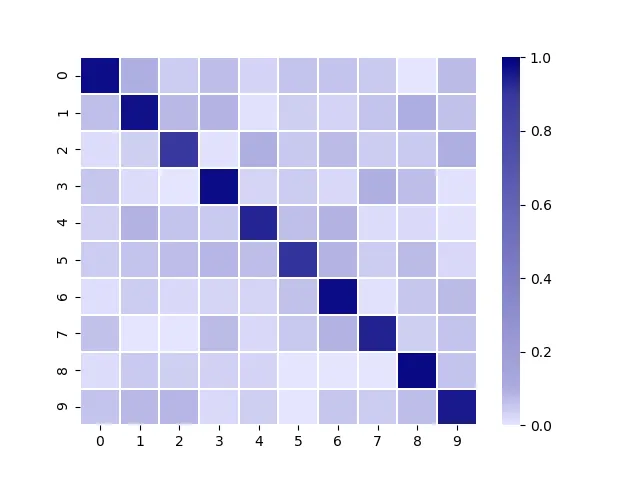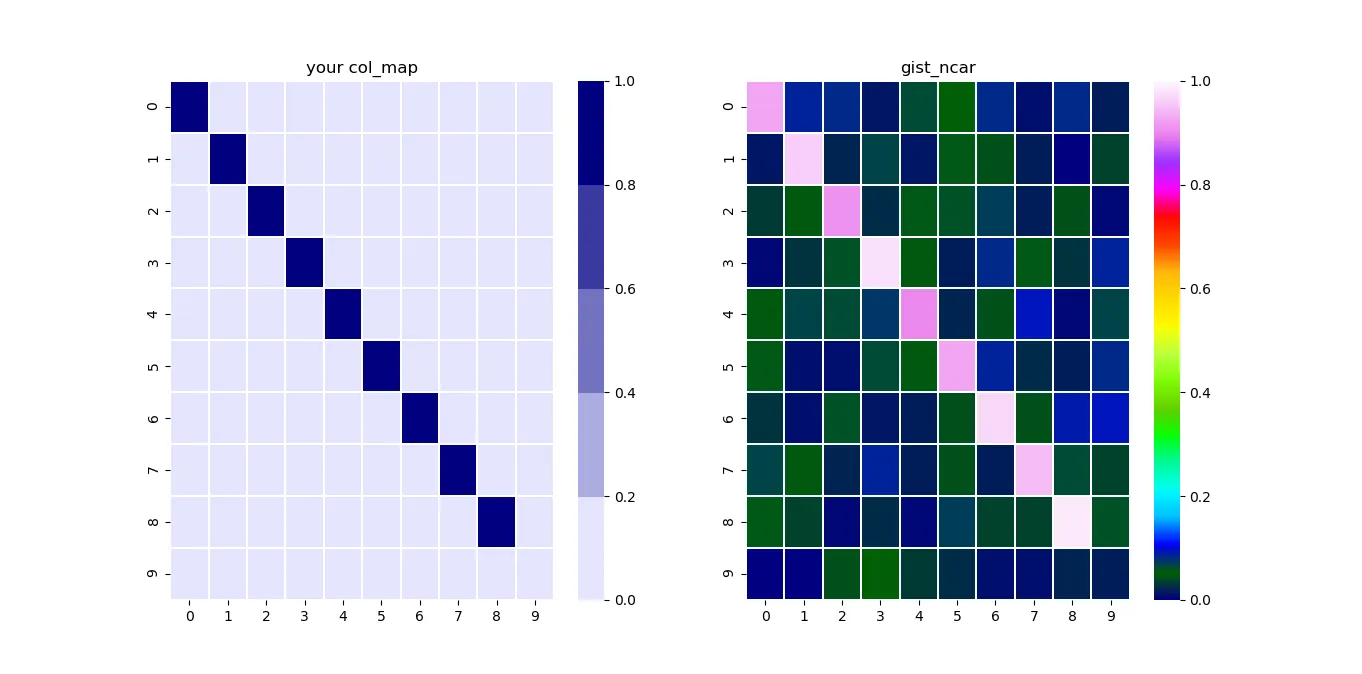我希望您能够使用seaborn库绘制热力图。绘图函数如下:
然而, 现在我正在努力解决的问题是seaborn热图(如下所示)均匀分割颜色比例尺,因此大部分数据具有相同的颜色(因为数据不均匀分布)。
现在我正在努力解决的问题是seaborn热图(如下所示)均匀分割颜色比例尺,因此大部分数据具有相同的颜色(因为数据不均匀分布)。
我无法找到如何设置某种间隔或边界以进行颜色级别的方法。
假设我有以下十六进制颜色值数组:
感激任何帮助。
PS:当前热图示例:
def plot_confusion_matrix(data, labels, **kwargs):
"""Visualize confusion matrix as a heat map."""
col_map = kwargs.get('color_palette', sns.light_palette('navy', n_colors=5, as_cmap=False))
sns.heatmap(
vmin=0.0,
vmax=1.0,
data=data,
cmap=col_map,
xticklabels=labels,
yticklabels=labels,
linewidths=0.75,
)
然而,
data的直方图如下所示: 现在我正在努力解决的问题是seaborn热图(如下所示)均匀分割颜色比例尺,因此大部分数据具有相同的颜色(因为数据不均匀分布)。
现在我正在努力解决的问题是seaborn热图(如下所示)均匀分割颜色比例尺,因此大部分数据具有相同的颜色(因为数据不均匀分布)。我无法找到如何设置某种间隔或边界以进行颜色级别的方法。
假设我有以下十六进制颜色值数组:
['#e5e5ff', '#acacdf', '#7272bf', '#39399f', '#000080']
是否有一种方法设置颜色,例如
[(threshold_0, hex_0), (threshold_1, hex_1), ..., (threshold_n, hex_n)]
其中threshold_i是范围在[0,1)内的值?感激任何帮助。
PS:当前热图示例:



sns.heatplot中边界居然不能直接定义。+1 - CermakM